Milking Efficiency, Shannon and Cass Rolls (Canterbury)
6 min read
Milking efficiency improvement is vital for dairy farmers and can lead to better outcomes without significant costs. The page discusses Shannon and Cass Rolls' experience using DairyNZ’s Milksmart strategies to enhance their milking processes at Dunkirk Farm. After attending DairyNZ discussions and seeking advice from an expert, they made various adjustments to their routine. These tweaks ensured a consistent cow flow, optimised milking machine settings, and involved minor infrastructure changes. As a result, their farm now enjoys faster and more efficient milking times, all achieved with a modest budget. It's not about working harder, but using available resources more effectively.
Improving milking efficiency is one of the great wins for dairy farmers. It requires little extra cost but can produce life-enhancing results for everyone on-farm, as Canterbury equity partners Shannon and Cass Rolls have found after implementing DairyNZ’s Milksmart strategies.
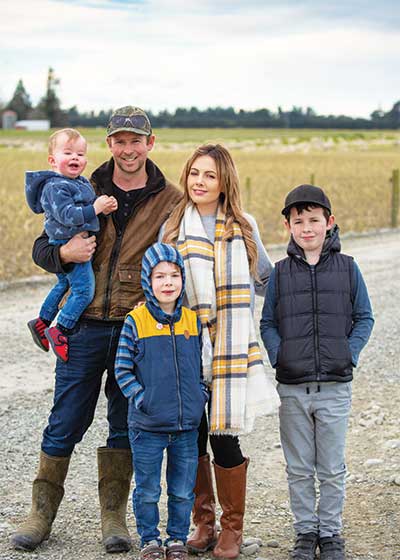
When Shannon and Cass’s farm manager, Ross Elliott, went off to a DairyNZ discussion group in 2018, he returned bubbling with enthusiasm. He told Shannon that he thought the Milksmart approach might help to solve some of their milking problems.
Although Dunkirk Farm (owned by Shannon’s parents) has a relatively new 60-bail rotary dairy with all the bells and whistles, the team was milking only 280 to 300 cows an hour.
“I wasn’t quite sure how to improve this, but that all changed when we joined a regular DairyNZ Milksmart discussion group in February this year (2019). We have since been to three of these and hosted one on the farm,” says Shannon.
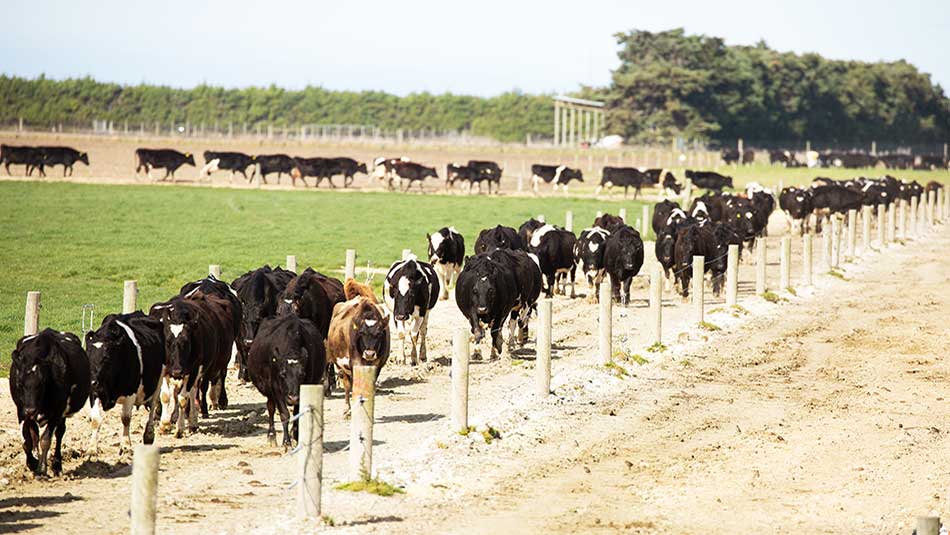
Before tinkering with the milking routine, Shannon attended the next Milksmart discussion group and sought advice from DairyNZ milking consultant Josh Wheeler, a recognised Milksmart expert from QCONZ. Shannon says Josh visited the farm, took a look at what they did and made several suggestions which have made all the difference.
The Rolls’s cows are divided into two mobs of 475, milked twice daily at 16-hour and eight-hour intervals by different milkers. Shannon says that, before adopting Milksmart methods, he was seeing a variance of up to one hour a milking between milkers. But while he was keen to milk more efficiently, he certainly didn’t want to cut corners.
“I thought it would be beneficial to improve our milking times, but I didn’t want that to come at the expense of cow health and doing the job properly,” he says.
"It was good to have a fresh pair of eyes looking at the way we do things. Josh analysed our milking routine and told us that a few simple changes would improve our milking efficiency."
Shannon’s number-one frustration was inconsistent cow flow. He discussed this with Josh, who says the difference between good and bad flow is often down to how staff control the backing gates in the yard.
“When I visited the farm, I could see the cows would flow well for the first hour because the yard was full. But because the main gate wasn’t being moved up regularly to take the space of the cows exiting, there were gaps in the yard and it could take 15 minutes to recover.
In the meantime, there would be empty bails and lots of stress for the milkers. Cows like consistent routines, so the more consistently milking is managed between staff, the better the cows will flow,” says Josh.
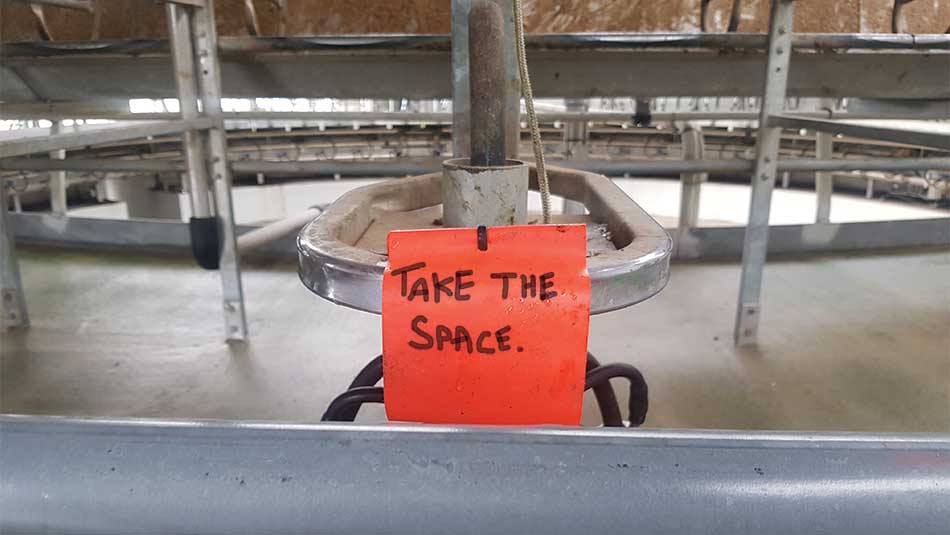
The Rolls’s first change was to put flags on the backing gates so the milkers can easily see them from where they’re putting on cups. They also added a flag to one of the bails on the platform and wrote ‘take the space’ on it. Now, every time the rotary does a lap and the flag goes past, the milkers are reminded to move the main gate to bring up more cows.
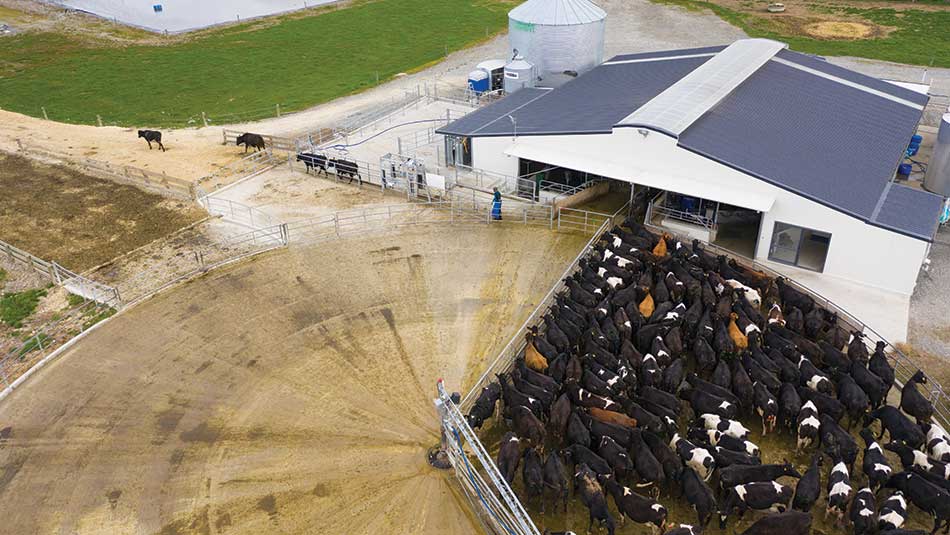
“It was good to have a fresh pair of eyes looking at the way we do things."
Another of Josh’s suggestions was to move the control box that controls the backing gate and platform speed. This allows the milkers to stand immediately next to the bridge, where the cows load.
“In many rotaries, milkers stand two or three bails away from the bridge and every bail you stand away costs you eight cows an hour. So, overall, Shannon was losing 24 cows an hour by staff standing three bails away from the bridge," says Josh.
The Rolls have also covered the entry to the rotary platform so cows and milkers can’t see each other. This has made it easier for the milkers to stand by the bridge and improve loading.

Josh also suggested using MaxT (maximum milking time – see dairynz.co.nz/maxt-rotary or dairynz.co.nz/maxtherringbone), where cows are milked to a pre-determined maximum time, either a fixed time point or a set milk flow rate threshold (if using automatic cup removers).
The objective of MaxT is to fully milk 80 percent of cows and shorten the milking time of the slowest 20 percent. Studies have shown this can be done with no impact on somatic cell count or production.
“Shannon has implemented MaxT using the same milking time for a.m. and p.m., 8.5 minutes/cow from cups on to cups off, based on their estimated peak production. He's aiming to shorten the slowest 20 percent of cows at the a.m. milking and the slowest five percent at p.m. milking. The current milking time will be adjusted again post-peak production," says Josh.
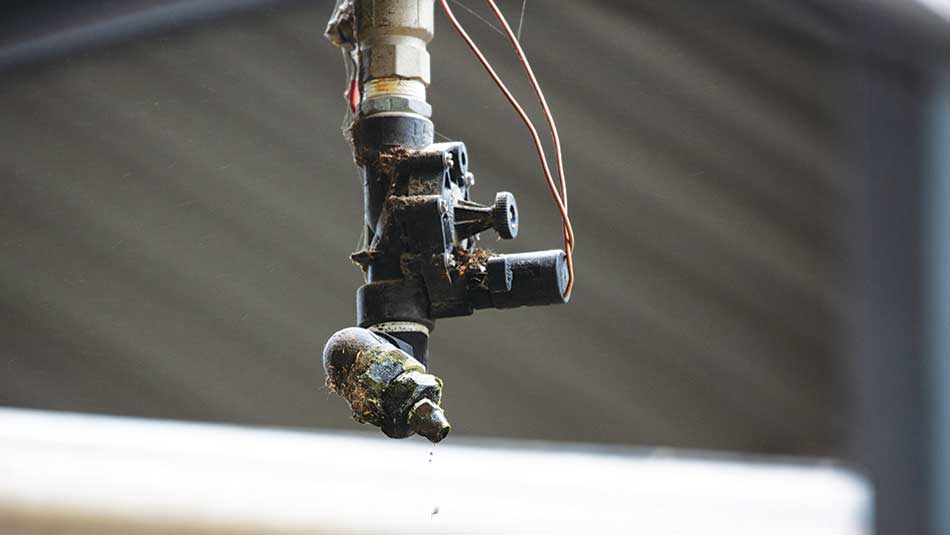
“One of our aims with implementing MaxT was to ensure that every cow only did one rotation, so we milked by time and that improved cows exiting.”
The cows have two clear signals to help them exit. One is a thick anchor rope, which acts as a visual reference to help the cows know when they can safely back off. The other is an automatic water jet, which discourages cows from staying in the bail or trying to re-enter.
Once the Rolls had sorted out their cow flow, they implemented other strategies to improve milking times. These centred around cup liners and changing the milking machine’s pulsation ratio.
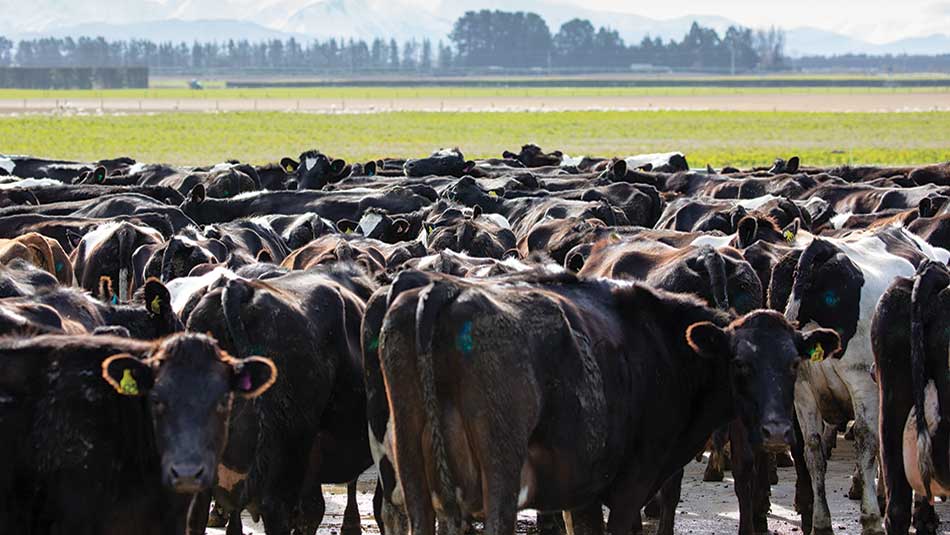
Cows hold a third of their udder milk in the front teats, and two thirds in the back. Typically, choosing cup liners is about finding ones that don’t slip – but non-slip liners typically milk more slowly.
To increase milking times, Josh advised the Rolls to use slip-resistant liners for the front teats, and fast milking liners for the back teats.
“Come spring, we’re hoping these changes will gain us 30 seconds per cow,” says Shannon.
To further speed up milking, the pulsation ratio on the milking plant was changed from 60:40 to 65:35. The Rolls milk at a 16-hour interval between the afternoon and morning milking, and an eight-hour interval between morning and night, so 66 percent of the milk is harvested in the morning.
“We wanted to speed up the milking machine to harvest that milk more quickly, so by changing the pulsation ratio, our speed of milking has improved by about eight percent,” says Josh.
Automated water jets are another improvement to the dairy, added to signal cows that haven't exited.
“Because Shannon’s got automatic cup removers and we’re milking by time, there’s no increase in over-milking.”
Shannon says learning about milking efficiency at a DairyNZ Milksmart discussion group got buy-in from the Dunkirk Farm team.
“Everyone was supportive because they were involved from the outset and understood why we were making changes. We keep up to date by going to Milksmart discussion groups as often as we can. New staff members know exactly what to do because illustrations of milking procedures are on our smoko room wall.”
In dollar terms, improving milking efficiency at Dunkirk Farm was relatively inexpensive. Shannon says they didn’t have to make major infrastructure changes because the dairy shed is fairly modern, built in 2013. The incremental changes they’ve made over the last six months have cost less than $2000.
“Milking efficiency is not usually a general topic of conversation, so it’s good to be able to benchmark it and be willing to make small changes,” says Shannon. “There doesn’t need to be a big silver bullet. And it’s not necessarily about working harder or faster; it’s all about making the best use of the resources that you already have.
“Now that we’ve implemented Milksmart techniques, I’ve found that it’s possible to reduce milking times but still do a proper job and also give the cows the same attention to detail.”
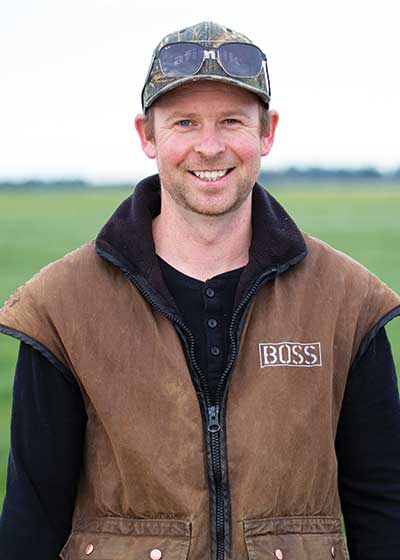
DairyNZ Milksmart discussion groups give you skills and strategies to improve milking efficiency on your farm. These groups generally run in February and March. Keep an eye out for details of a group near you at dairynz.co.nz/events
Now’s the perfect time to check in, plan, and set up for a strong season. We’ve pulled together smart tips and tools to help you stay ahead all winter long.
Whether you prefer to read, listen, or download handy guides, we’ve got you covered with trusted tools to support your journey every step of the way.